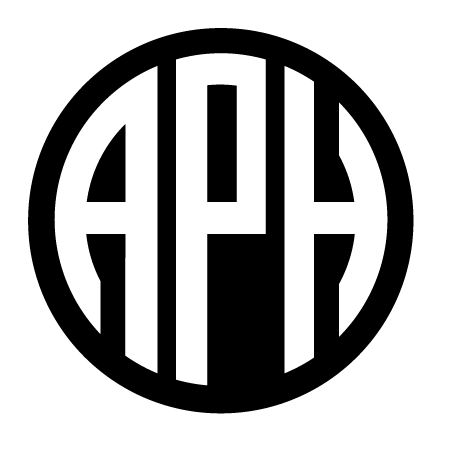Go to navigation for Accessible Tests Resource Center
Assessment Consortia and NAEP
Information about the National Assessment of Education Program (NAEP), Partnership for the Assessment of Readiness for College and Careers (PARCC), Smarter Balanced Assessment Consortium (SBAC), Dynamic Learning Maps (DLMs) , Multi-State Alternate Assessment (MSAA) which was formerly the National Center and State Collaborative (NCSC), English Language Proficiency Assessment for the 21st Century (ELPA21), and WIDA’s Consortium’s ACCESS for ELLs 2.0.
The National Assessment of Educational Progress (NAEP)
Release Event for The Nation’s Report Card: Technology and Engineering Literacy (TEL).
On May 17, 2016, The National Assessment Governing Board released the first-ever Nation’s Report Card:
Technology and Engineering Literacy (TEL) at the Michigan Science Center. The National Assessment of Educational Progress (NAEP) results include findings for 8th graders across the nation and by student groups.
Presentation of the NAEP results.
The Road Ahead for State Assessments: What the assessment consortia built, why it matters, and emerging options by ETS (Educational Testing Service), March 2016
Table of Contents for The Road Ahead for State Assessments:
- The Changing Landscape of State Assessments
- Reflections on the Race to the Top Assessment Program
- A Closer Look at Lasting Benefits of the New Assessments
- What’s Ahead: The Every Student Succeeds Act (ESSA)
The Assessment Consortia:
- Partnership for the Assessment of Readiness for College and Careers (PARCC)
- The Smarter Balanced Assessment Consortium (SBAC)
- Dynamic Learning Maps
- The Multi-State Alternate Assessment (formerly the National Center and State Collaborative)
- The English Language Proficiency Assessment for the 21st Century (ELPA21) Consortium
- The WIDA Consortium’s ACCESS for ELLs 2.0
- Consortia Memberships (chart)
Smarter Balanced Assessment Consortium (SBAC)
According to SBAC website information on December 9, 2015, there are 17 U.S. mainland states (California, Connecticut, Delaware, Idaho, Iowa, Michigan, Montana, Nevada, New Hampshire, North Carolina, North Dakota, Oregon, South Dakota, Vermont, Washington state, West Virginia, and Wyoming) that are SBAC members as well as Hawaii, the U.S. Virgin Islands, and The Bureau of Indian Education.
The Smarter Balanced Assessment Consortium is a service provided by a public institution (University of California at Los Angeles), governed by member-states and territories and funded with member state/territory fees. SBAC has developed next-generation assessments to accurately measure student progress toward college and career readiness in English language arts/literacy (ELA) and Mathematics. Complete information on the Consortium and its assessments, including full practice tests for each grade and subject, can be found at www.smarterbalanced.org
- Accessibility Review of Smarter Balanced 2015 Sample Test Items by APH Consultant Paul Ferrara
- Accessibility Review of SBAC Math Practice Test Items by APH Consultant Paul Ferrara
- PARCC and SBAC
Here are numerous valuable links to a variety of Smarter Balanced (SBAC) selections on their new 2016 website. The following links were provided courtesy of Smarter Balanced staff.
- Accessibility and Accommodations
- Members and Governance
- Practice and Training Tests
- Reporting Scores
- Testing Technology
- Smarter Assessments
- Sample Questions
- For Parents and Students
- Accessibility and Accommodations Fact Sheet
- Usability, Accessibility, and Accommodations Guidelines
Media
These audio-video files provide you with information on the major consortium Partnership for Assessment of Readiness for College and Careers (PARCC) as well as on the second major consortium Smarter Balanced Assessment Consortium (generally referred to as Smarter Balanced or SBAC). Their focus is on access to online assessments; both PARCC and SBAC utilize online assessment systems. Within each of these systems there are embedded accessibility features and tools built in, and each system has been programmed for access via a variety of common assistive technology such as JAWS for speech output and a refreshable braille display.
In November 2015, Accessible Tests Department staff as well as consultant Paul Ferrara at the American Printing House for the Blind (APH) began to review the 2015 Sample Test Items using the embedded features, tools, and supports as well as assistive technology such as external software, hardware, and devices. The primary purposes of these reviews were to determine which sample test items were fully accessible, which were inaccessible, and which ones could be accessible with some changes (such as providing an accompanying tactile graphic and/or a text-based description and/or changing the format of the item). Select APH staff reviewed each sample test item and made notes regarding the item’s accessibility and how access could be improved. The appropriate review was then shared with SBAC or PARCC staff in order to assist them in their understanding of what is and is not accessible to students who are blind and visually impaired, and to provide them with some suggestions/information/resources on making their sample test items fully accessible. It is hoped and assumed that if PARCC’s and SBAC’s Sample Test Items are fully accessible that the likelihood of their actual Test Items being fully accessible is very high. It is recognized and appreciated that both SBAC and PARCC have been and are continuing to work toward full accessibility for students who are blind and visually impaired.
Visit the SBAC Montage © APH 2015 for a considerable amount of valuable information related to accessing SBAC’s Spring 2015 Sample Test Items. Visit the PARCC Presentation for similar examples and information regarding access to PARCC’s Spring 2015 Sample Test Items.
In addition to these audio-video presentations, Consultant Paul Ferrara and Test Editor Katherine Padgett provide their evaluative comments and suggestions regarding accessibility of the PARCC as well as the SBAC Sample Test Items. As APH staff is developing the new Accessible Tests Resource Center site to launch in March 2016, SBAC and PARCC staff is working on new Sample Test Items for their websites. As soon as their new sample test items are available, APH staff plan to review these items for accessibility with the built-in embedded tools and supports as well as the assistive technology with which it has been designed to work.


